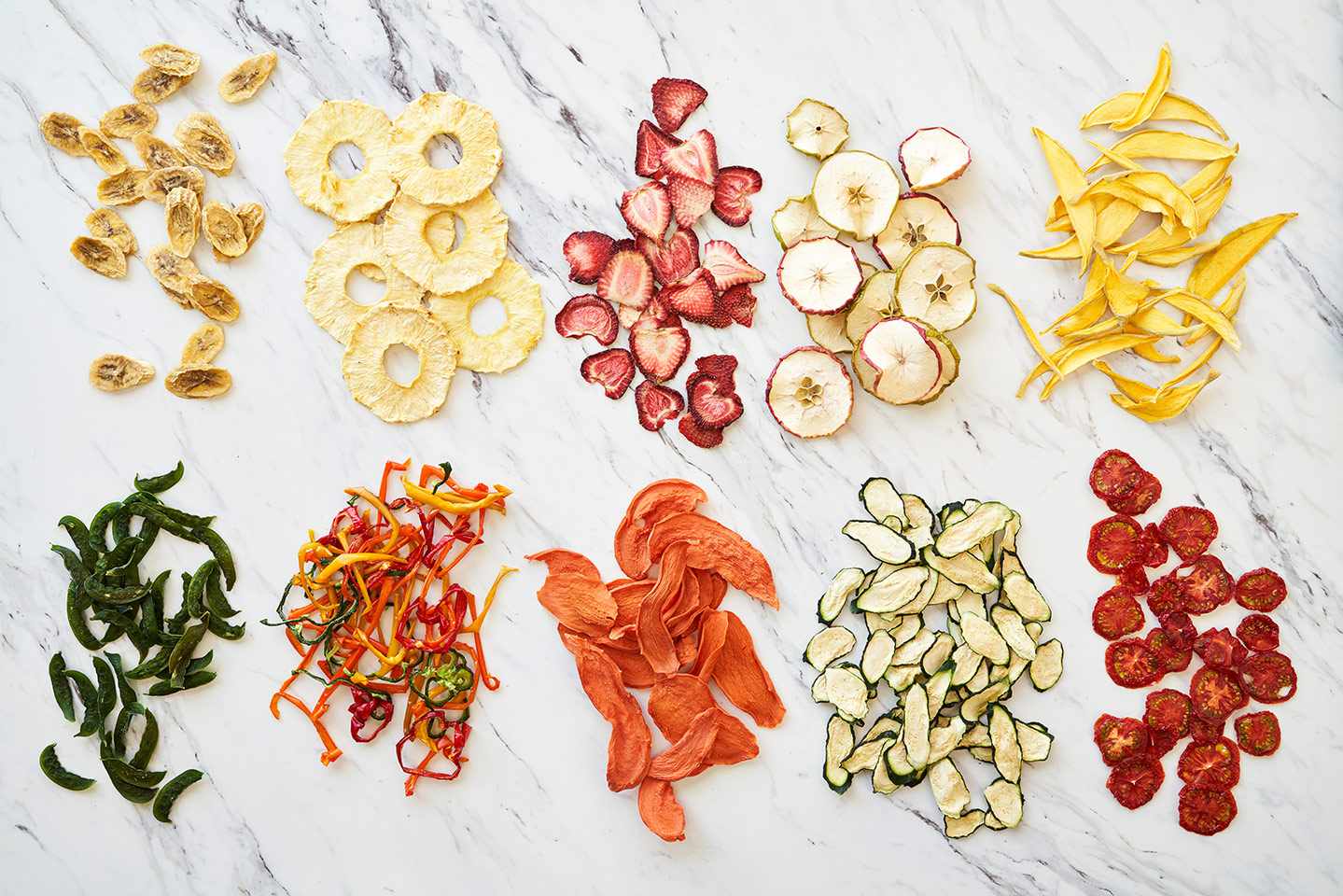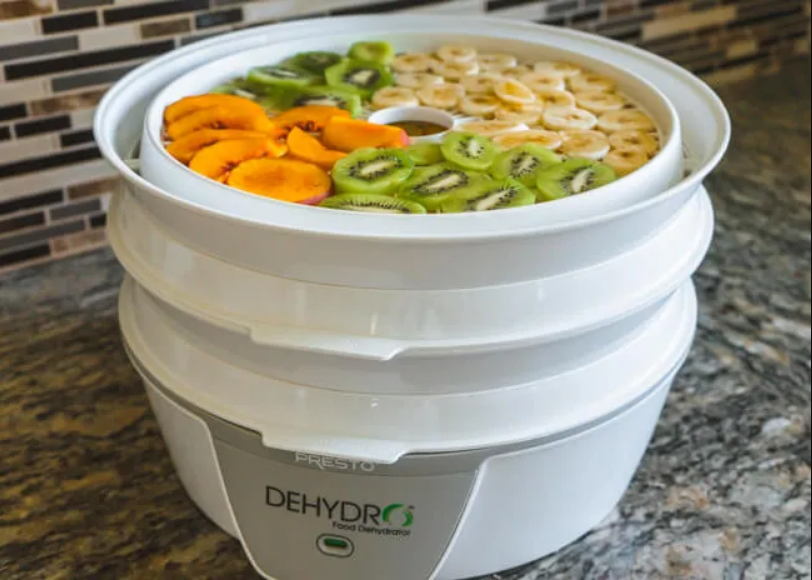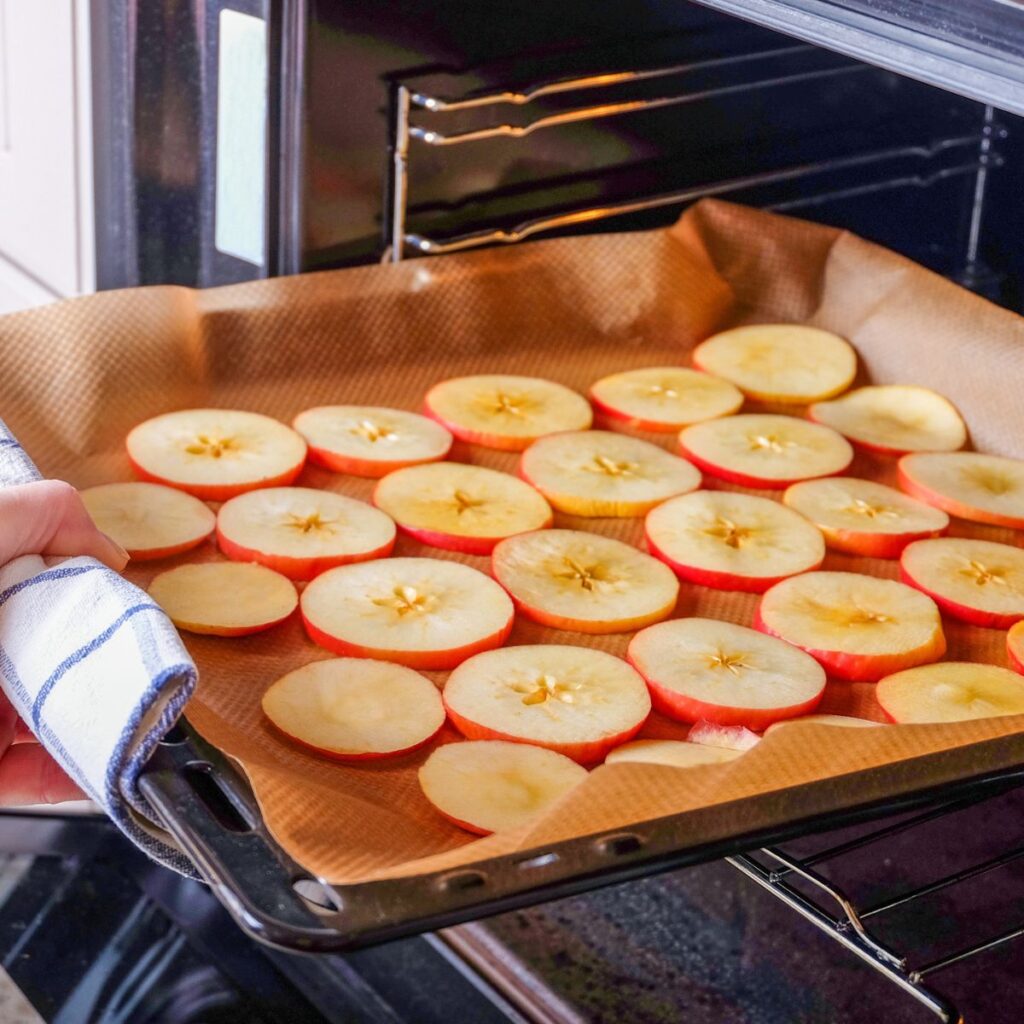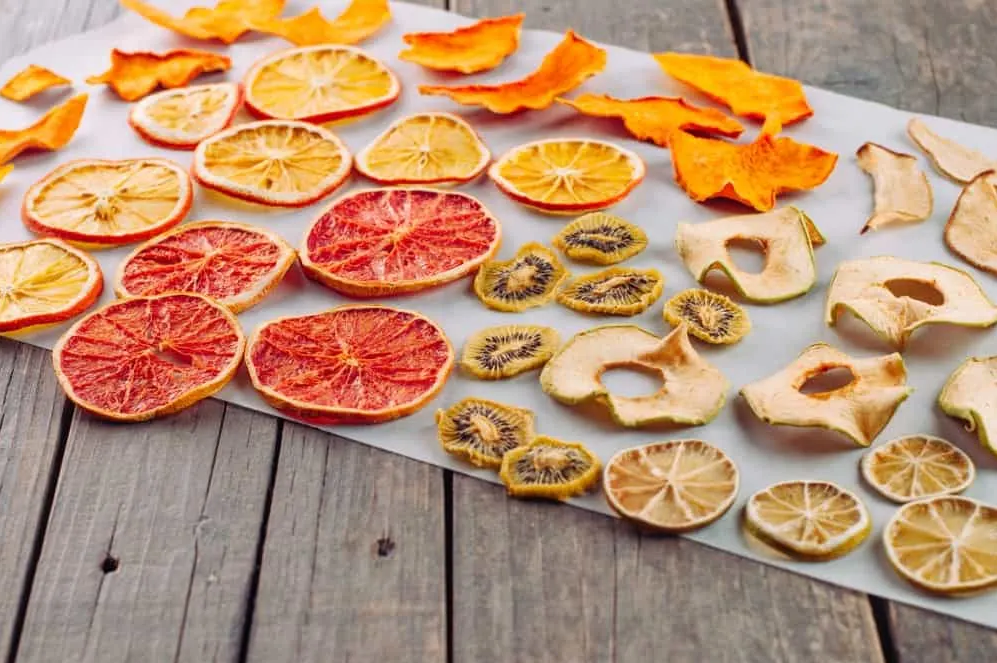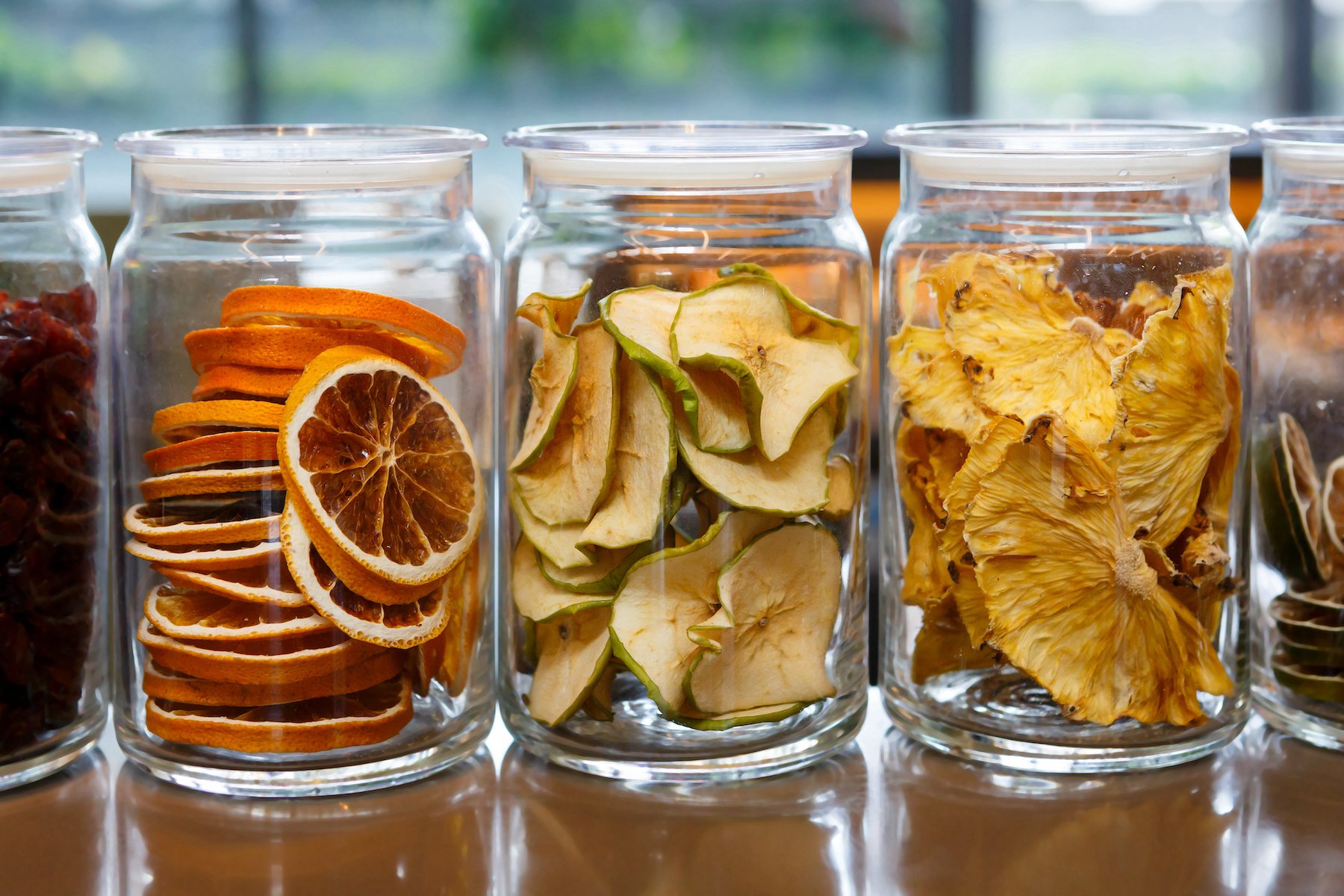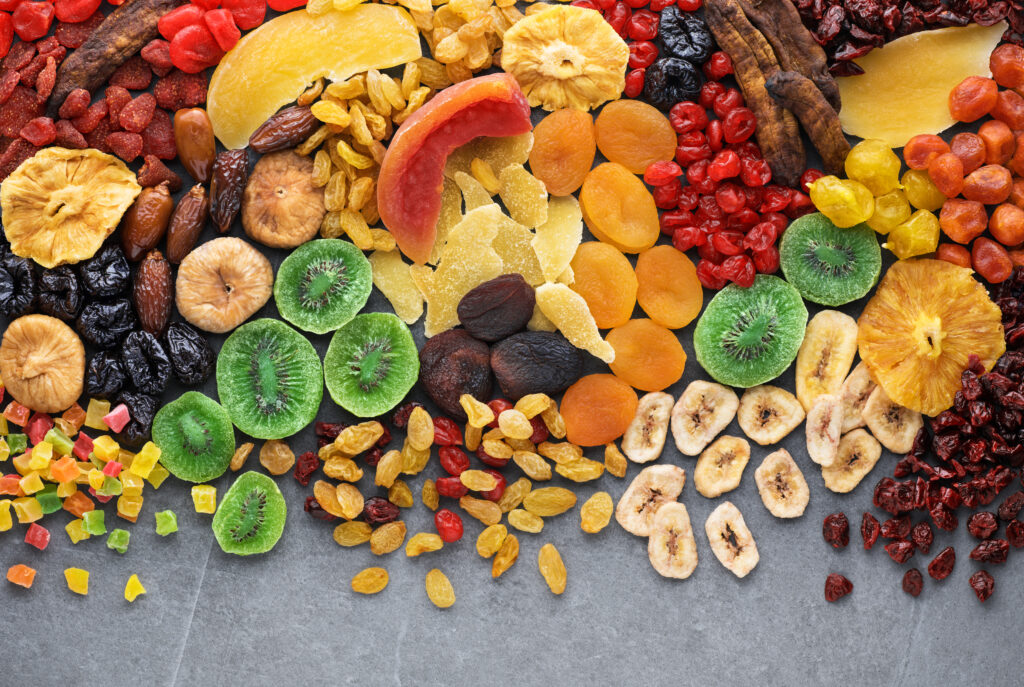
Dehydrating fruits at home is not only a practical way to preserve the abundance of seasonal produce but also an excellent method to intensify flavors and create healthy snacks.
Have you ever wondered how to preserve your favorite fruits for longer? This simple preservation technique allows you to enjoy the delightful taste of fruits throughout the year, transforming them into chewy, flavorful treats.
With a little preparation and the right methods, you can create delicious dehydrated fruits that are perfect for snacking or adding to your favorite recipes.
Understanding Dehydrated Fruits
Dehydrated fruits are fresh fruits that have had their moisture removed, typically through a slow evaporation process or gentle heat application.
This dehydration process concentrates the natural sugars, flavors, and nutrients, resulting in a tasty and nutritious snack that lasts much longer than fresh fruits.
Unlike some commercially dried fruits that may contain added sugars or preservatives, homemade dehydrated fruits can be pure and natural, giving you complete control over the ingredients.
Nutritional Benefits Of Dehydrated Fruits
Dehydrated fruits retain many of the vitamins, minerals, and fiber found in their fresh counterparts. Key nutrients in dehydrated fruits include:
- Vitamin C: Important for immune function and skin health.
- Fiber: Aids in digestion and helps maintain a healthy weight.
- Potassium: Supports heart health and blood pressure regulation.
- Plant Polyphenols: Antioxidants that may reduce the risk of chronic diseases.
Consuming dehydrated fruits can be a delicious way to increase your nutrient intake while satisfying sweet cravings without excess calories.
Related: What Is The Longest Fruit Name Ever?
Choosing The Right Fruits For Dehydration
Selecting the right fruits is crucial for successful dehydration. Here are some excellent choices that dehydrate well:
- Apples: Crisp and naturally sweet, perfect for snacks or baking.
- Bananas: Their sweetness intensifies when dried, making them a popular choice.
- Peaches: Soft and flavorful, they retain their taste and texture well.
- Strawberries: Their vibrant color and sweetness make them a favorite in dried form.
- Mango: A tropical delight that becomes chewy and sweet when dehydrated.
Always opt for ripe, high-quality fruits to ensure the best flavor and results. Using fruits that are in season can also enhance the taste of your dehydrated snacks.
Preparing Fruits For Dehydration
Preparation is key to achieving the best results when dehydrating fruits. Follow these steps:
- Wash Thoroughly: Rinse the fruits under cool water to remove dirt and pesticides.
- Peeling and Slicing: Depending on the fruit, you may want to peel it. Slice the fruits into uniform pieces (about 1/8 to 1/4 inch thick) to ensure even drying. Using a mandolin slicer can help maintain consistent thickness.
- Preventing Browning: To keep fruits like apples and bananas from turning brown, soak them in a solution of equal parts lemon juice and water for about 10 minutes. This antioxidant treatment helps preserve color and flavor.
Methods Of Dehydrating Fruits
1. Using A Dehydrator
A food dehydrator is the most efficient way to dry fruits. Here’s how to use it:
- Set the Temperature: Preheat your dehydrator to about 55°C (131°F).
- Arrange the Fruit: Place the fruit slices in a single layer on the trays, ensuring they don’t overlap.
- Drying Time: Dehydrate for 4-6 hours, flipping the fruit every 1-2 hours to promote even drying.
- Check for Doneness: The fruits should be leathery and pliable when done, with no visible moisture.
2. Oven Dehydration
If you don’t have a dehydrator, your oven can also work well:
- Preheat the Oven: Set your oven to its lowest temperature, typically between 120°C to 175°F (248°F to 350°F).
- Prepare the Baking Sheets: Line baking sheets with parchment paper.
- Arrange the Slices: Spread the fruit in a single layer, ensuring pieces do not touch.
- Drying Time: Bake for 2-3 hours, turning every 30 minutes to prevent sticking. The total time may vary based on the fruit type and thickness.
Watch How to Dry Fruit in the Oven:
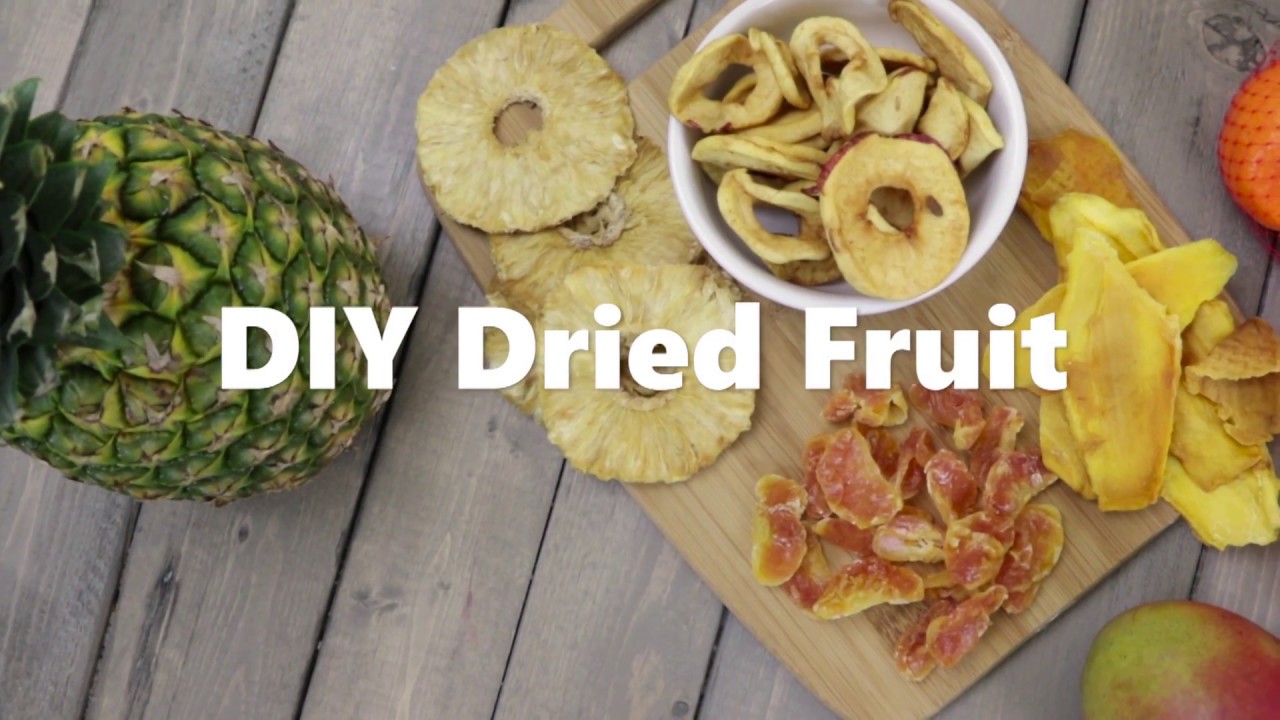
DIY Dried Fruit
3. Air Drying
Air drying is another option, particularly in warm, dry climates:
- Prepare the Fruit: Wash and slice the fruit as mentioned earlier.
- Hang or Place: String the slices on a clean thread or lay them on a drying rack in a well-ventilated area away from direct sunlight.
- Drying Duration: This method can take several days, depending on humidity and air circulation.
Safety And Hygiene Practices
Maintaining food safety is crucial when dehydrating fruits. Always use clean equipment and work surfaces, and wash your hands before handling food.
Ensure the fruits are thoroughly cleaned to remove any chemicals or waxes. Proper storage in airtight containers is essential to prevent moisture and mold growth.
See Also: What Is The Sweetest Fruit? 15 Exotic And Sugary Choices You Must Try
Troubleshooting Common Issues
Even seasoned home dehydrators can encounter challenges. Here are common issues and solutions:
- Over-Drying: If fruits become too dry and brittle, consider cutting them thicker next time to retain some moisture.
- Inconsistent Drying: Ensure all pieces are of uniform thickness and avoid overcrowding the trays.
- Sticking to Trays: Use parchment paper or silicone mats to prevent sticking.
Storing Dehydrated Fruits
Proper storage is essential to keep your dehydrated fruits fresh and flavorful:
- Airtight Containers: Store dehydrated fruits in glass jars or airtight bags in a cool, dark place.
- Glass Jars: Mason jarswith tight-fitting lids are great for short to medium-term storage.
- Vacuum-Sealed Bags: For longer storage, vacuum-sealing or using oxygen absorbers can help extend shelf life.
Creative Ways To Use Dehydrated Fruits
Dehydrated fruits are incredibly versatile. Here are some ideas to inspire your culinary creativity:
- Granola and Snack Bars: Incorporate dried fruits into homemade granola bars for a nutritious boost.
- Yogurt Parfaits: Layer dehydrated fruits with yogurt and granola for a delicious breakfast or snack.
- Baking: Add dried fruits to muffins, cakes, or breads for added flavor.
- Chocolate Dipping: Dip dried fruits like bananas or strawberries in melted chocolate for a sweet treat.
Also Read: What Is The National Fruit Of USA: Comparing With Global National Fruits
Quick Reference Guide
- Select ripe, fresh fruits.
- Wash and slice uniformly.
- Pretreat with lemon juice if needed.
- Use a dehydrator or oven at the recommended temperatures.
- Store in airtight containers to maintain freshness.
FAQs About Dehydrating Fruits
What Types Of Fruits Are Best For Dehydration?
Fruits like apples, bananas, peaches, and strawberries are excellent choices for dehydration due to their flavors and textures.
How Long Do Dehydrated Fruits Last?
When stored properly, dehydrated fruits can last from 6 months to a year.
Can You Rehydrate Dehydrated Fruits?
Yes, dehydrated fruits can be rehydrated by soaking them in water or juice before use in recipes.
Is It Necessary To Use A Dehydrator?
No, you can use an oven or air drying method if a dehydrator is not available. Each method has its benefits.
How Can I Tell If My Dehydrated Fruits Are Done?
Dried fruits should be leathery and pliable, with no visible moisture.
Conclusion
Dehydrating fruits at home is an enjoyable and rewarding process that allows you to enjoy delicious snacks year-round.
With the methods and tips outlined in this article, you can confidently create your own dehydrated fruits, preserving their natural flavors and nutrients.
Whether you’re looking to reduce food waste or simply enjoy a healthy treat, dehydrating fruits opens up a world of culinary possibilities.
Start experimenting with your favorite fruits and relish the delightful flavors of your homemade snacks!
